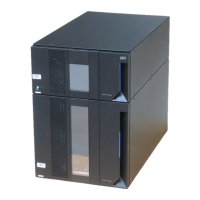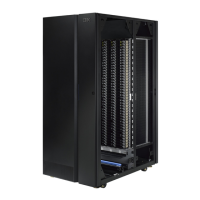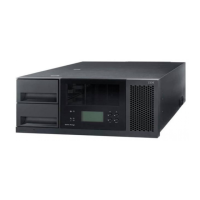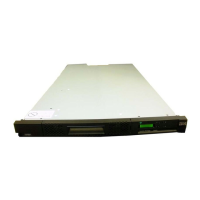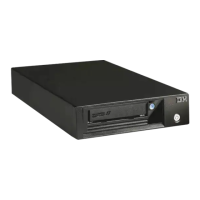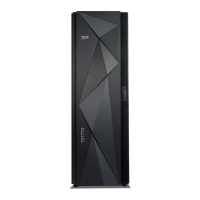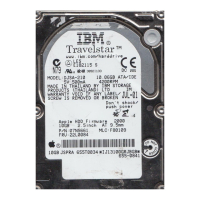Path Failover (Feature Code 1682)
The Path Failover feature includes license keys for activating control path failover
and data path failover. Path Failover is a combination of two previous features:
Control Path Failover (key entered at the library user interface) and Data Path
Failover (key entered at the device driver interface). A single activation key entered
at the library user interface now activates both features, with one exception. For
LTO Ultrium 3 drives with firmware level 73P5 or lower, the device driver
interface Data Path Failover key activation will still be required. The Path Failover
feature is available on select drives.
Control Path Failover
A control path is a logical path into the library through which a server sends
standard SCSI Medium Changer commands to control the logical library.
Additional control paths reduce the possibility that failure in one control path will
cause the entire library to be unavailable. Use of the control path failover feature
further reduces that possibility.
Data Path Failover
Data Path Failover is designed to provide a failover mechanism in the IBM device
driver, which enables you to configure multiple redundant paths in a SAN
environment. In the event of a path or component failure, the failover mechanism
is designed to automatically provide error recovery to retry the current operation
using an alternate, pre-configured path without aborting the current job in
progress. This allows you flexibility in SAN configuration, availability, and
management.
Encryption (Feature Code 5900)
The TS3310 library supports host encryption on LTO Ultrium 5 Fibre Channel
drives when used with LTO Ultrium 4 or LTO Ultrium 5 data cartridges. The
TS3310 library supports host encryption on LTO Ultrium 4 Fibre Channel and SAS
drives when used with LTO Ultrium 4 data cartridges. The TS3310 library supports
three configurations for establishing encryption policy and providing encryption
keys to the drive:
v Application Managed Encryption (AME). Encryption policies and keys are
established and provided by the host application. This is a standard feature for
all Ultrium 4 and Ultrium 5 drives in the TS3310 library. Since the application
manages the encryption keys, volumes written and encrypted using the AME
method can only be read by the same application that wrote them.
v System Managed Encryption (SME). SME encryption key generation and
management is performed by the IBM Encryption Key Manager (EKM), a Java
application running on a system-attached host. SME policies are established by
enabling the SME capability on one or more instances of the IBM device driver,
which will also be used as a proxy between a key server and the drive for
providing encryption keys to the drive. This encryption configuration is
transparent to the host application. SME requires the Transparent LTO
Encryption license key (Feature Code 5900).
v Library Managed Encryption (LME). LME encryption key generation and
management is performed by the IBM Encryption Key Manager (EKM), a Java
application running on a library-attached host. LME policies are established by
the library, which may also be used as a proxy between a key server and the
drive for providing encryption keys to the drive. This encryption configuration
is transparent to the host application. LME requires the Transparent LTO
Encryption license key (Feature Code 5900).
2-22 TS3310 Tape Library Maintenance Information
|
|
|
|
|
|
|
|
|
|
|

